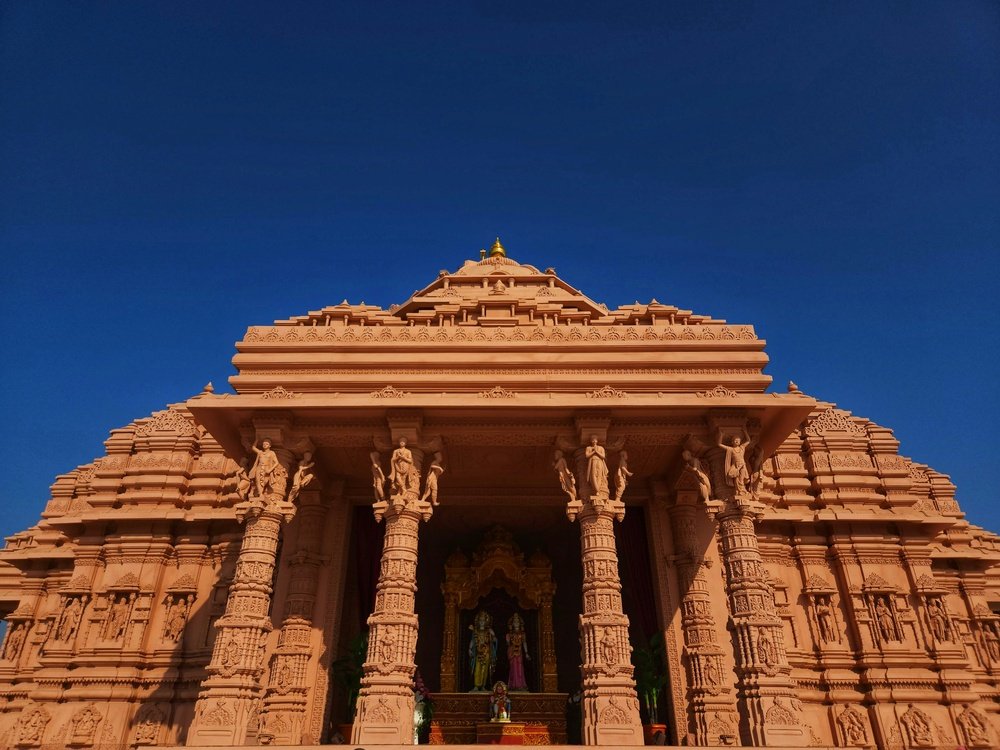Ayodhya, one of the oldest and most sacred cities in India, holds a profound connection with the Hindu epic, the Ramayana. Known as the birthplace of Lord Rama, Ayodhya is a city where mythology breathes through its temples, ghats, and sacred sites. Every street and structure tells a tale from the Ramayana, making it a spiritual haven for devotees and mythology lovers alike. If you’re looking to walk the legendary Ramayan trail, here are the most iconic places to visit in Ayodhya that bring the epic to life.
1. Shri Ram Janmabhoomi Temple
At the heart of Ayodhya lies the Shri Ram Janmabhoomi Temple, the most sacred spot in the city. It is believed to be the exact location where Lord Rama was born. The newly constructed temple, rich in traditional Indian architecture, is not just a religious site but also a symbol of faith and devotion. Visiting this temple is often considered the beginning of one’s spiritual journey through the Ramayan trail.
2. Kanak Bhawan
Another major stop on the trail is Kanak Bhawan, said to be the palace gifted to Goddess Sita by Queen Kaikeyi after her marriage to Lord Rama. The temple houses beautifully adorned idols of Rama and Sita in royal attire. Its colorful interiors and intricate carvings reflect the joy of divine union, making it one of the most vibrant places to visit in Ayodhya.
3. Hanuman Garhi
Hanuman Garhi is a significant landmark associated with the loyal devotee of Lord Rama, Lord Hanuman. Legend says Hanuman lived here to protect Ayodhya after Rama’s departure to the forest. Perched on a small hillock, the temple requires a climb of 76 steps and offers a beautiful panoramic view of the city. Pilgrims traditionally visit Hanuman Garhi before heading to Ram Janmabhoomi.
4. Treta Ke Thakur
This lesser-known yet important site is believed to be where Lord Rama performed the Ashwamedha Yajna after returning from exile. The Treta Ke Thakur temple enshrines black stone idols of Lord Rama, Sita, Lakshman, and Hanuman, said to date back to the 12th century. The temple is open to the public on specific occasions, adding to its mystique and spiritual allure.
5. Nageshwarnath Temple
Nageshwarnath Temple holds a unique spot on the Ramayan trail as it is said to have been established by Kush, the son of Lord Rama, for a naga princess who was a devotee of Lord Shiva. The temple plays an essential role during the Mahashivratri festival and is a prime example of Ayodhya’s religious diversity and its links with Ramayan mythology.
6. Ram ki Paidi
Located on the banks of the Sarayu River, Ram ki Paidi is a series of ghats where pilgrims take a holy dip. According to legend, Lord Rama was often seen walking along these steps. The ghats are beautifully illuminated in the evening during the Ganga aarti, offering a divine atmosphere that transports visitors back to the time of the Ramayana.
7. Guptar Ghat
Guptar Ghat is believed to be the place where Lord Rama took Jal Samadhi, ending his earthly journey and returning to his divine form. The peaceful surroundings, along with shrines dedicated to Lord Rama, make this ghat an emotional and reflective part of the Ramayan trail. It’s ideal for meditation, spiritual thought, and remembering the Lord’s legacy.
8. Mani Parbat
Mani Parbat is a small hill in Ayodhya associated with the episode of Lord Hanuman carrying the Sanjeevani mountain to save Lakshman. It is believed to be a fragment of that mountain which fell here. Today, it houses several shrines and offers a serene view of the city from its summit.
9. Sugriv Parbat
Close to Mani Parbat, Sugriv Parbat is linked with Sugriva, the monkey king who helped Lord Rama in his battle against Ravana. The site offers mythological as well as historical significance and provides insight into the episodes of Lord Rama’s alliances during his exile.
10. Tulsi Smarak Bhawan
Although not a direct location from the Ramayana, Tulsi Smarak Bhawan honors Goswami Tulsidas, the saint-poet who authored Ramcharitmanas, a revered retelling of the Ramayana. This center offers live recitations, devotional programs, and a museum displaying manuscripts and artifacts. It’s an essential stop for those wanting to understand how the Ramayan lives on through cultural and literary traditions.
Conclusion
Ayodhya is not just a city—it is a living epic. From the birth of Lord Rama to the final chapters of his journey, Ayodhya’s sacred sites take you through the legendary narrative of the Ramayana. Each of these places to visit in Ayodhya is steeped in mythological importance, creating a divine trail that allows modern pilgrims and curious travelers to walk through time.
Whether you are a devout follower of Lord Rama or simply someone drawn to India’s rich mythological heritage, Ayodhya offers a deeply spiritual and immersive experience that will leave a lasting impression on your soul.
